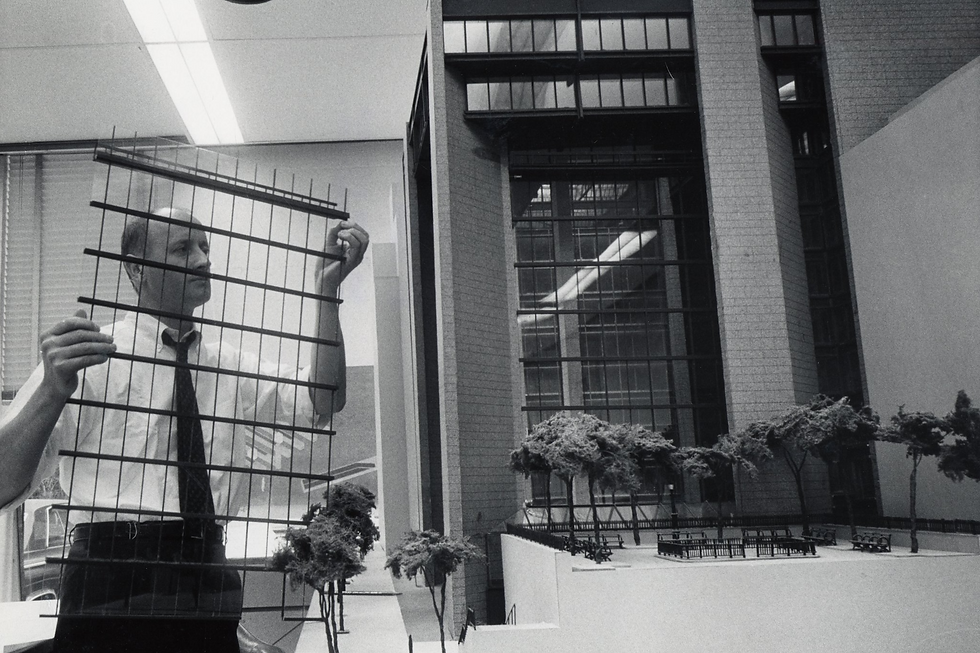ARCHITECTS / R
The architects featured in this section (A-Z) represent a diverse range of ideas, styles, and groundbreaking approaches that have shaped modern and contemporary architecture. From visionaries of the early 20th century to today’s influential designers, these books provide a deep dive into their creative processes, philosophies, and landmark projects. Whether redefining urban landscapes, experimenting with materials, or pushing the boundaries of form and function, these architects have left a lasting mark on the built environment. Explore their works and discover the foundations of architectural thought and practice that continue to inspire generations.
Philippe Rahm (born 1967) is a Swiss architect known for his research-driven, climate-responsive designs that integrate meteorology, physiology, and architecture. Founder of Philippe Rahm Architectes, he explores the role of light, temperature, and air composition in shaping built environments. Notable projects include the Jinghe New City Culture & Art Centre in China, the Central Park in Taichung, and exhibitions at the Venice Biennale. His work challenges traditional architectural norms by emphasizing atmospheric conditions as design elements, pushing the boundaries of sustainability and ecological urbanism. Rahm’s innovative approach continues to influence climate-conscious architecture and environmental design.
Lilly Reich (1885–1947) was a German architect and designer best known for her collaborations with Ludwig Mies van der Rohe, particularly in modernist furniture and exhibition design. She played a key role in designing the Barcelona Pavilion and the famous Barcelona Chair, pioneering minimalist, functional aesthetics. Reich was one of the first women to gain recognition in the Bauhaus movement, influencing interior and industrial design. Despite being overshadowed by Mies, her contributions to modernist materiality, spatial composition, and furniture innovation remain highly influential, shaping the evolution of 20th-century architecture and design.
Affonso Eduardo Reidy (1909–1964) was a Brazilian architect and a leading figure in modernist urban planning and social housing. A key contributor to Brazilian modernism, he designed the Museum of Modern Art in Rio de Janeiro and pioneering public housing projects, such as Pedregulho and Gávea Housing Complexes. His work blended Le Corbusier-inspired functionalism with Brazilian climate adaptability, using elevated pilotis, open facades, and natural ventilation. Reidy’s contributions to affordable housing and urban development helped shape Brazil’s postwar architectural identity, influencing generations of architects focused on social responsibility and sustainable urbanism.
Gerrit Rietveld (1888–1964) was a Dutch architect and designer best known for his role in De Stijl, an avant-garde movement that emphasized geometric abstraction and primary colors. His masterpiece, the Rietveld Schröder House (1924), is a seminal work of modernist architecture, featuring flexible, open-plan interiors and a revolutionary use of planes and lines. Rietveld also designed iconic furniture, including the Red and Blue Chair, which embodied De Stijl’s radical simplicity. His experimental approach influenced modern design, prefabrication, and spatial composition, leaving a lasting impact on 20th-century architecture and industrial design.
Kevin Roche (1922–2019) was an Irish-American architect known for his innovative corporate and institutional buildings, blending modernism with sculptural expression. As Eero Saarinen’s successor, he co-designed projects like the TWA Terminal before establishing his firm, Kevin Roche John Dinkeloo and Associates. His major works include the Ford Foundation Headquarters, the Metropolitan Museum of Art expansion, and the UN Plaza in New York. Roche’s architecture balanced functionality, transparency, and technological advancement, earning him the Pritzker Prize (1982). His work continues to shape corporate, museum, and urban architecture, emphasizing human-centric, sustainable modernism.
Richard Rogers (1933–2021) was a British architect renowned for his high-tech, exposed-structure designs that redefined urban architecture. A co-designer of the Pompidou Centre in Paris, his work emphasized flexibility, transparency, and adaptability. Other notable projects include the Lloyd’s of London building, the Millennium Dome, and the Barajas Airport Terminal in Madrid. Rogers championed sustainable, inclusive cities, advocating for public spaces and environmental responsibility. Awarded the Pritzker Prize (2007), his visionary approach to structural innovation and urban planning continues to influence contemporary architecture and civic design worldwide.
Aldo Rossi (1931–1997) was an Italian architect and theorist known for his postmodernist reinterpretation of classical forms. A leading figure in Neo-Rationalism, he designed the San Cataldo Cemetery, the Gallaratese housing complex, and the Teatro Carlo Felice renovation. Rossi’s theoretical work, including The Architecture of the City, redefined urban analysis, emphasizing memory, typology, and historical continuity. Awarded the Pritzker Prize (1990), he was the first Italian recipient, celebrated for his ability to merge historical references with contemporary design. His work remains a fundamental reference in theory-driven, context-aware architecture.
Paul Rudolph (1918–1997) was an American architect known for his dramatic Brutalist structures and intricate spatial compositions. As chair of Yale’s architecture department, he designed the Yale Art and Architecture Building, a Brutalist landmark. Other notable works include the Government Service Center in Boston and the Burroughs Wellcome Headquarters. His architecture featured bold concrete forms, complex multi-level interiors, and deep shadow play, pushing the limits of materiality and urban integration. Though controversial, his work profoundly influenced late-modernist and postwar urban design, making him a key figure in mid-20th-century American architecture.







_edited.jpg)